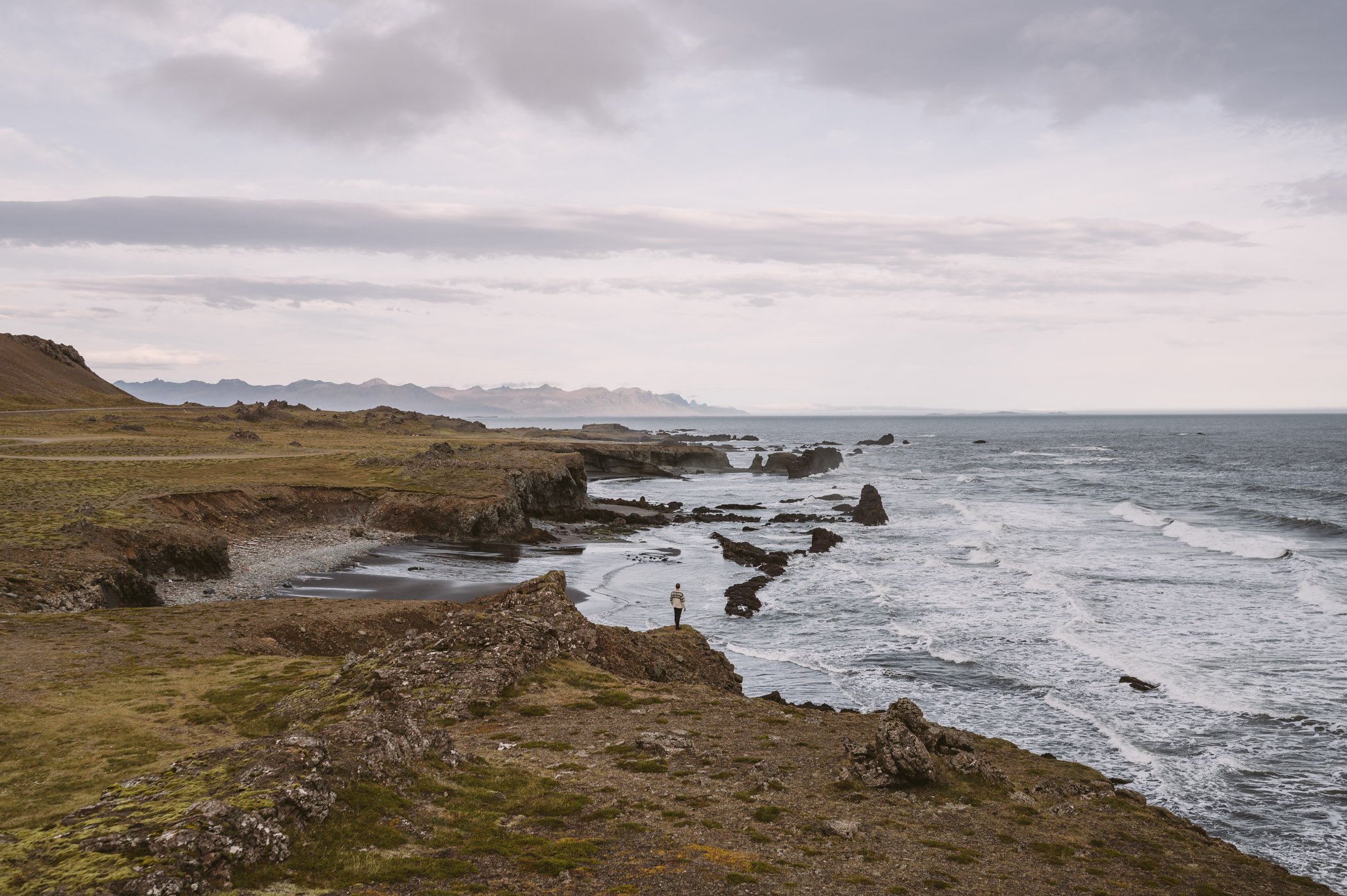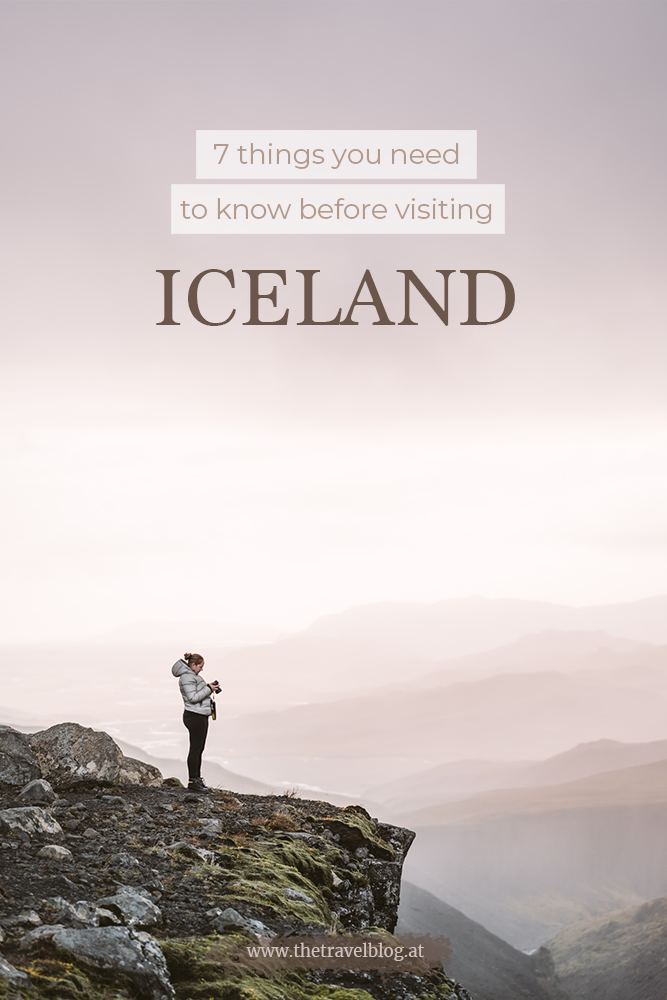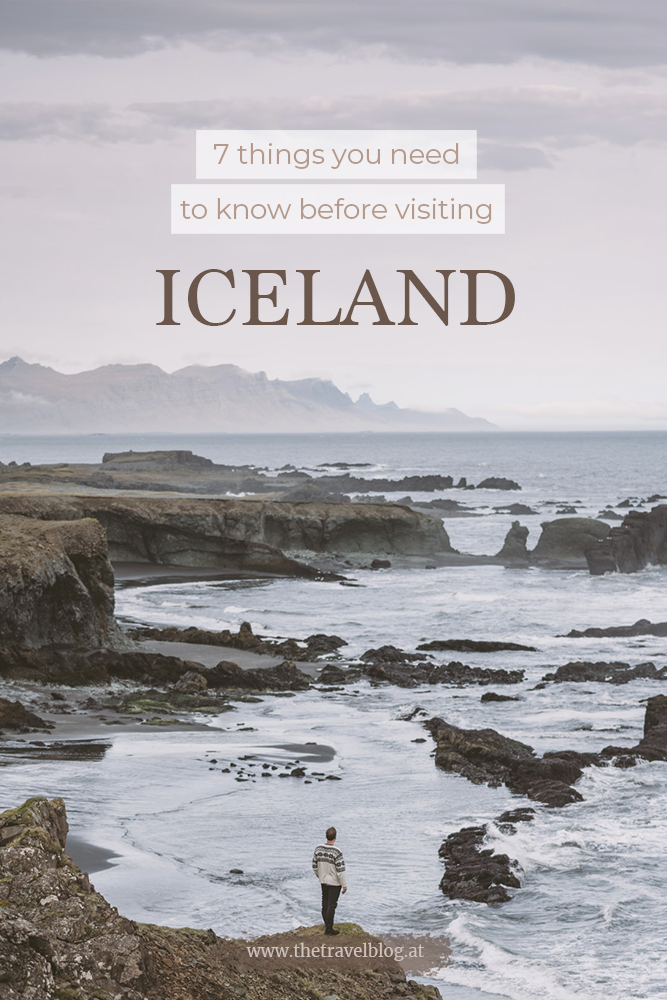Before traveling to Iceland here are 7 important things to know and consider. We spent 14 days on a self drive road trip through Iceland in September and learned a lot! Here are our Top 7 tips for a relaxed road trip through one of the most amazing countries on Earth.
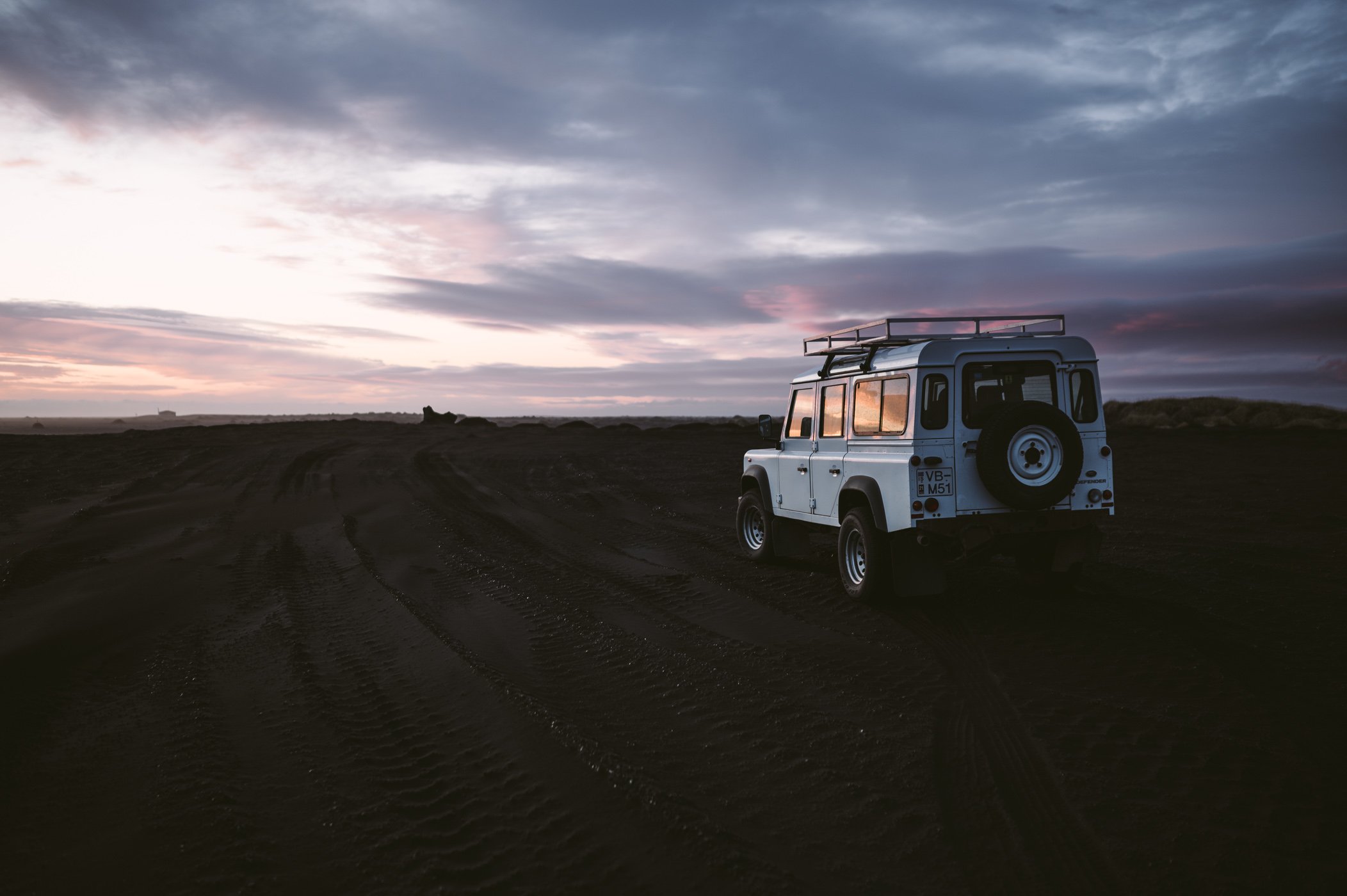 It matters in which season you are visiting and what kind of car you’re driving in Iceland!
It matters in which season you are visiting and what kind of car you’re driving in Iceland!
7 things you need to know when planning a trip to Iceland
- Time: When is the best time to visit Iceland?
- Booking: Where to book your trip to Iceland?
- Accommodation: Where to stay in Iceland?
- Food: Where & what to eat (as a vegetarian)?
- Roads: What kind of car to rent & what to know about the streets?
- Human needs: Where to pee (when on the road)?
- Packing: What to pack for Iceland?
1. Best time to visit Iceland
Most visitors use the long hours of daylight and milder temperatures and visit Iceland in the summer months (June – August). We tried to shift our trip to the end of the main season and visited in Mid-September. This way we were able to avoid the high season prices, but could still catch enough daylight (12-13 hours a day) and also drive on the highland roads.
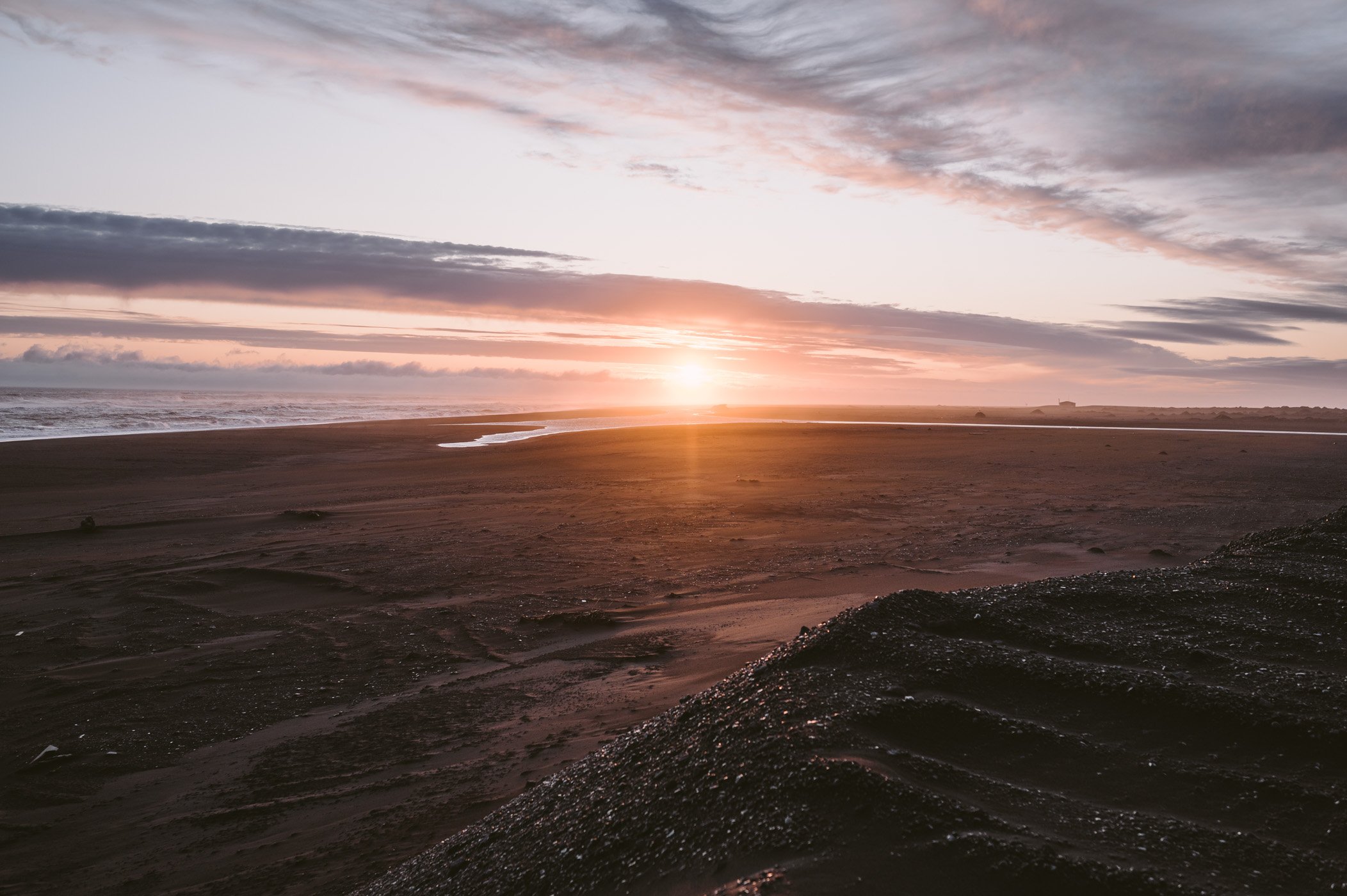 In September the days are still filled with sunshine and most of the roads are accessible.
In September the days are still filled with sunshine and most of the roads are accessible.
Yet – everything is weather dependent in Iceland. After we crossed the F26 highland road in a snowstorm on the 13th of September the road got closed the next day. Therefore you cannot get guarantees for road safety and open passages – especially not after the end of the main season. Our back-up route would’ve brought us to the Northern part of Iceland via the ring road instead, which stays open year-round for the most part (but also, no guarantees here). It’s always mandatory to check road.is for daily updates on road conditions!
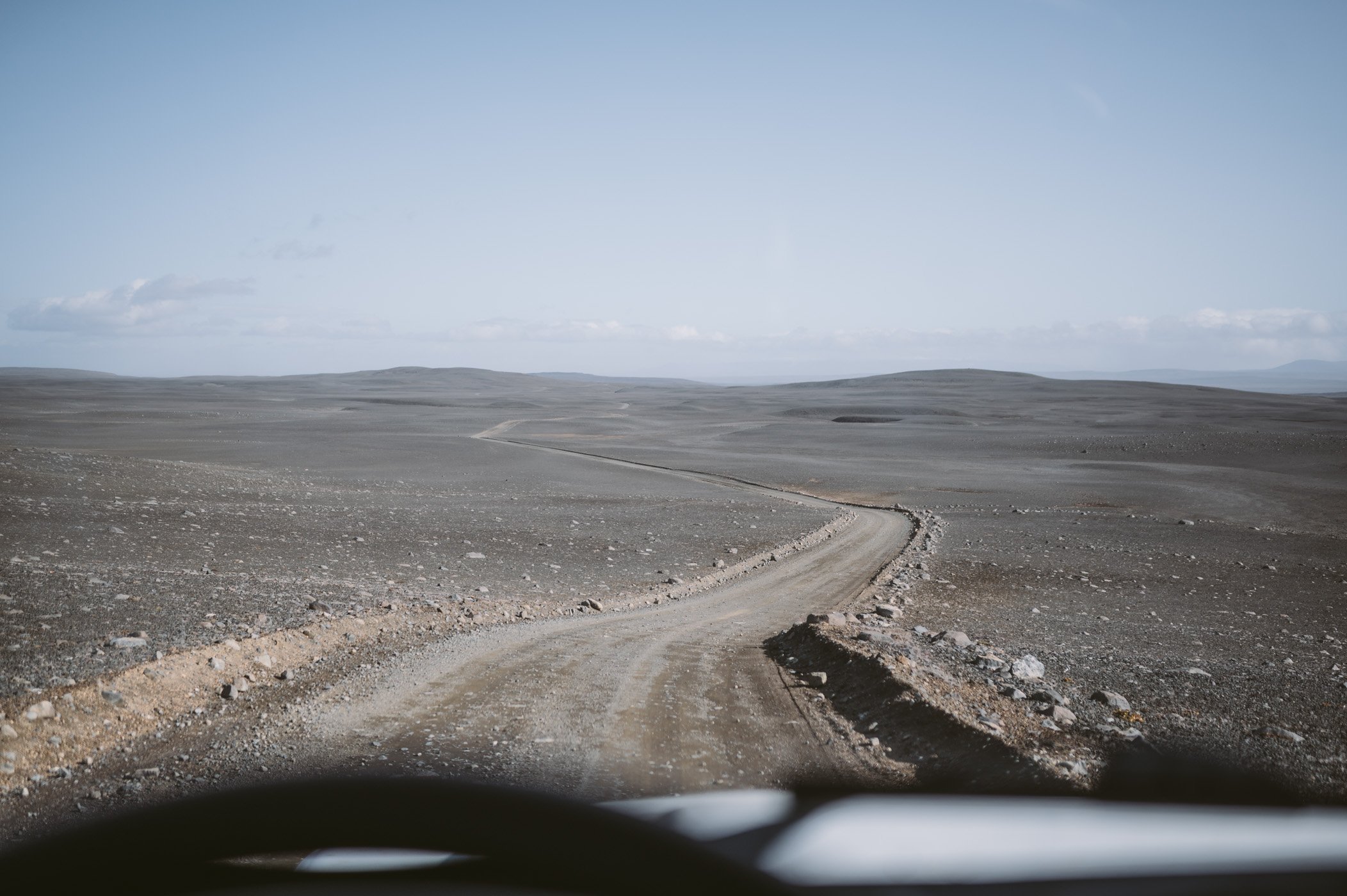 This was the F26 highland road on the last accessible day before it got closed due to snow.
This was the F26 highland road on the last accessible day before it got closed due to snow.
We were hoping to see Northern lights – as September is the season when Northern lights activity starts rolling in. Unfortunately we didn’t get lucky during those 2 weeks, although its theoretically possible to already catch the aurora in this season. The likelihood of course rises later in the year. But that’s also when daylight hours get shorter and shorter.
September is the perfect balance – right after the high season and with high chances of the highlands roads still being accessible.
Well, and the weather was of course Icelandic anyhow. We experienced really sunny warm days, followed by snow storms and pouring rain – and of course the craziest storms! These changing weather phenomenas are of course typical for Iceland year round.
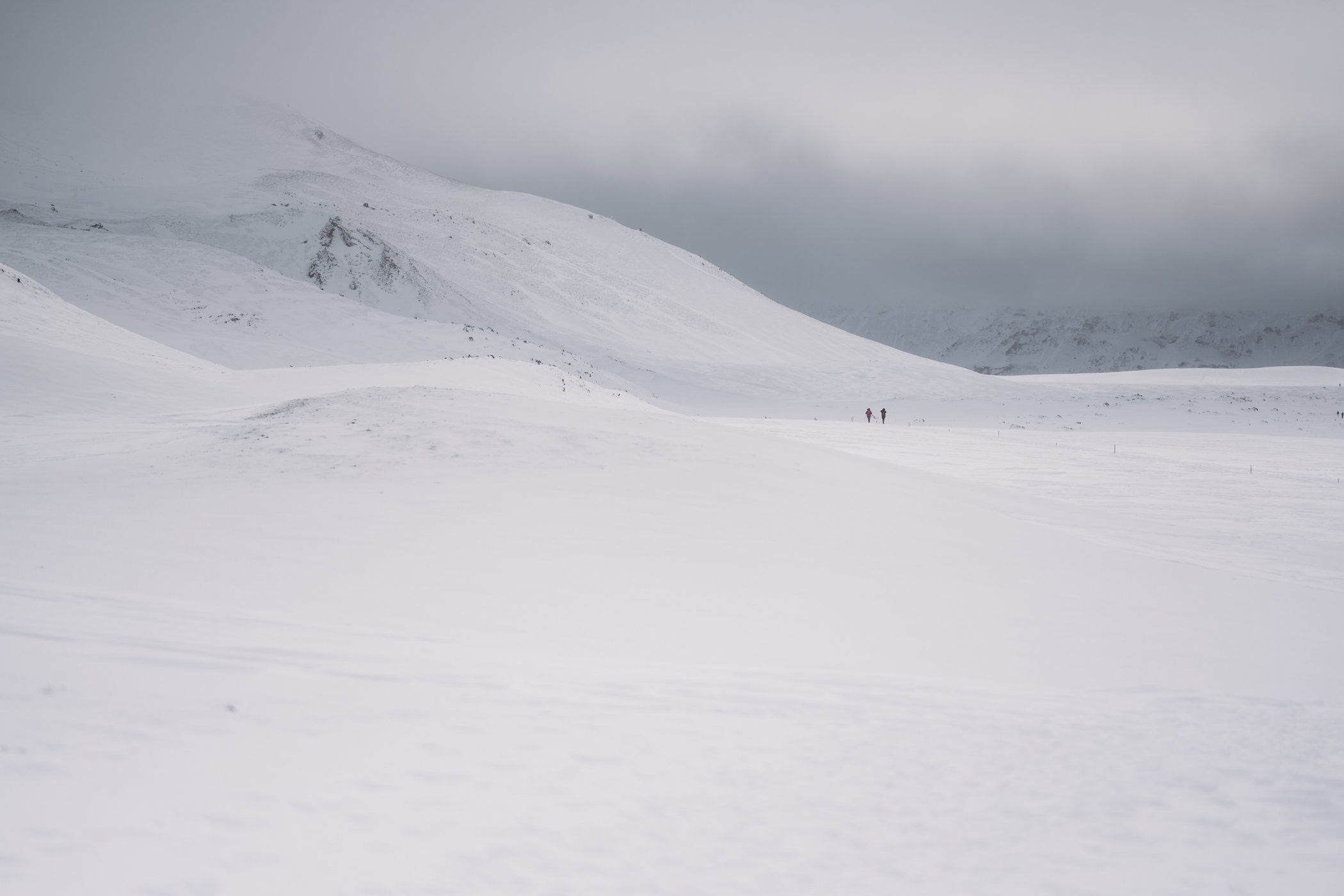 In Askja we experienced the first snow of the season, but got lucky, that the road was still accessible.
In Askja we experienced the first snow of the season, but got lucky, that the road was still accessible.
2. Where to book your Iceland road trip
We booked the whole trip with the Iceland specialists Katla Travel. Without them we wouldn’t have been able to dig up all those amazing places to stay and got so many tips along the way. For us it was the most convenient way to plan this trip, especially since we had never been in Iceland before and didn’t really know where to start! There are many things to consider when booking a road trip through Iceland – especially outside of the high season.
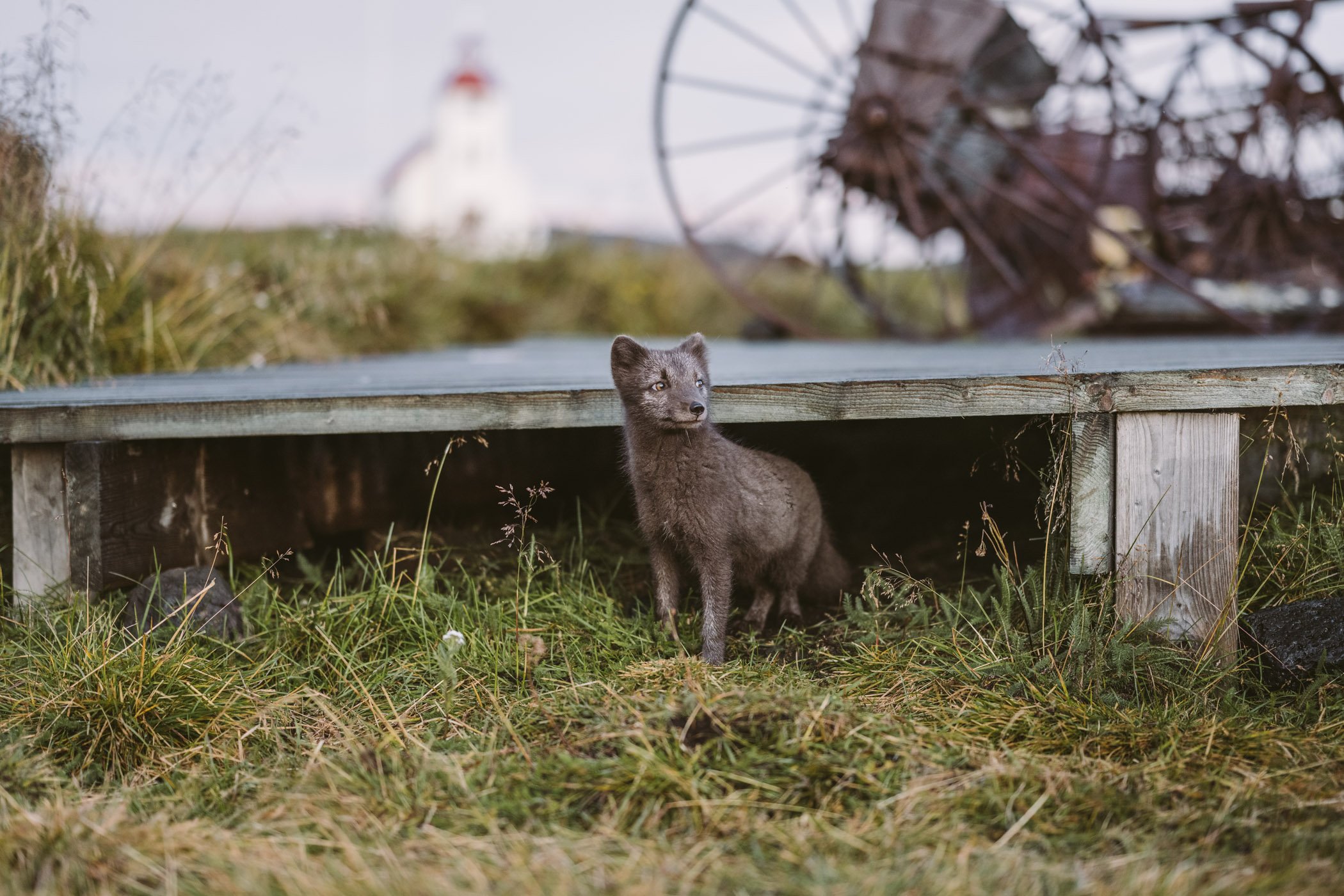 Thanks to the experts of Katla Travel we stayed in some beautiful & remote places and even saw wild Arctic fox!
Thanks to the experts of Katla Travel we stayed in some beautiful & remote places and even saw wild Arctic fox!
Many Iceland travellers make the “mistake” to stay along the ring road. Of course this is the most developed zone of Iceland and you’ll find many convenient hotels and guesthouses along this road. But if you venture off the ring road, sometimes just for a few kilometres, you’ll be able to stay in the real Icelandic wilderness in some of the most incredible places!
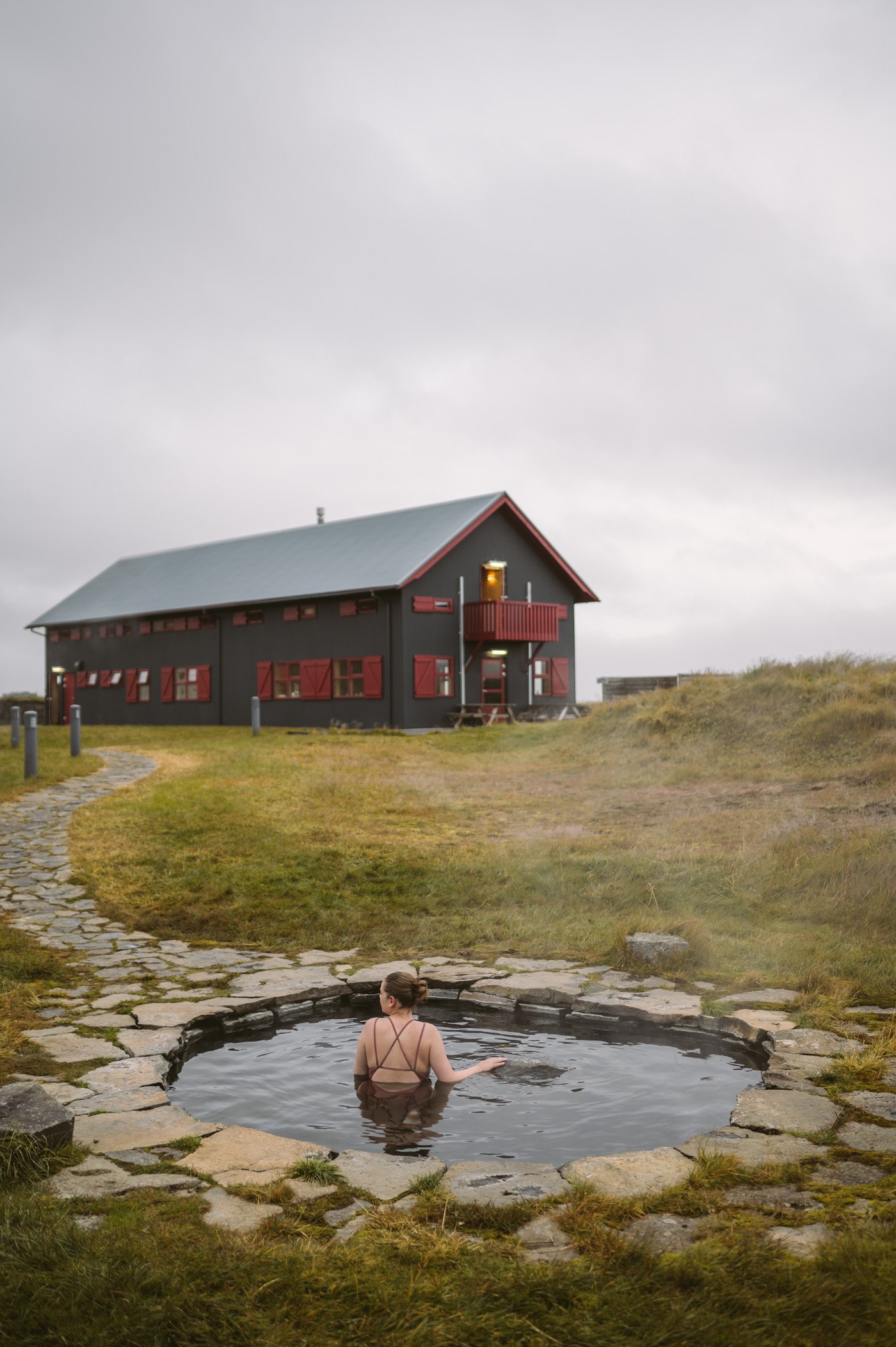 Laugarfell and it’s private hot tub – one of the remotest places we stayed at!
Laugarfell and it’s private hot tub – one of the remotest places we stayed at!
If you’re looking for a great partner to help you set up your personalised Iceland itinerary Katla Travel are the ideal candidate! They are focusing 100% only on Iceland trips and have vast knowledge of the country and many local partners who they are working together with since many many years.
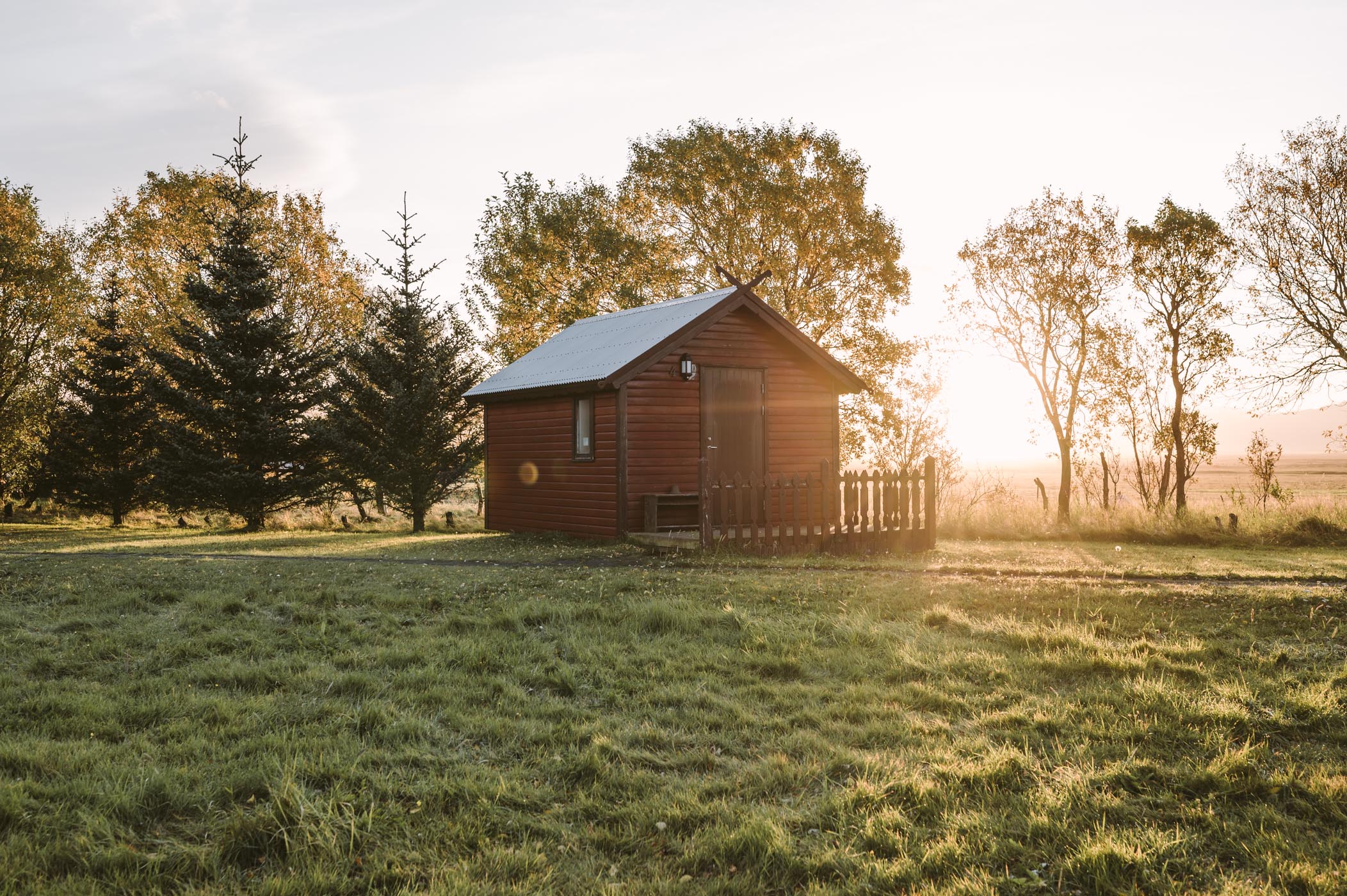 Hotel Fljotshlíd offers these cute cabins to stay in – right next to their sheep farm.
Hotel Fljotshlíd offers these cute cabins to stay in – right next to their sheep farm.
3. Where to stay in Iceland
This brings us to the next point: What kind of accommodation to choose when traveling Iceland? We stayed in a variety of different guesthouses, farmstays and hotels. The most important part was the location for us. We preferred not to sleep right next to the ring road. As soon as you venture out a couple of kilometres from the main road you’ll get to the most magnificent places, remote nature and incredible landscapes.
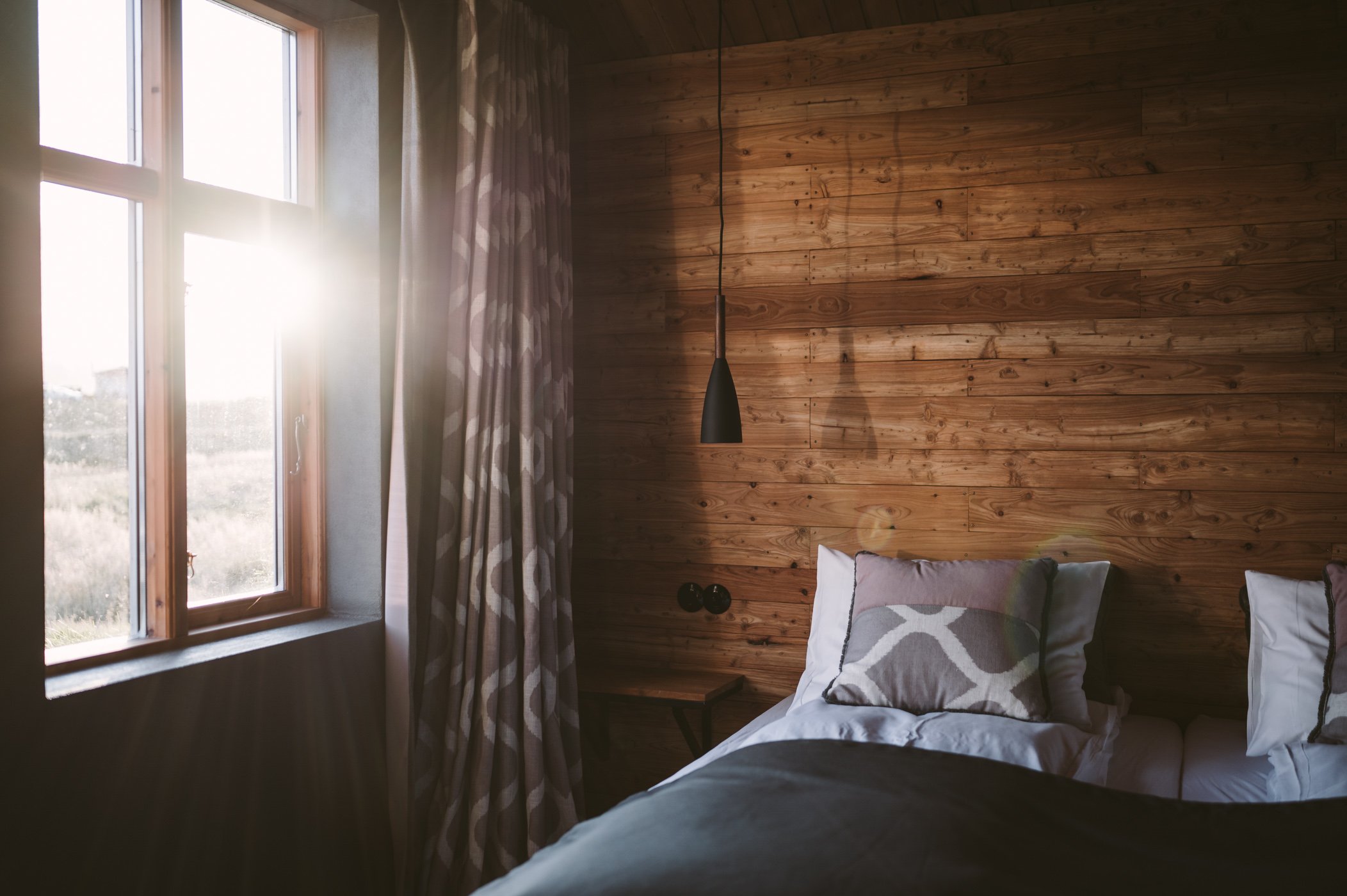 Fjalladyrd Guesthouse was our absolute favourite place in all of Iceland!
Fjalladyrd Guesthouse was our absolute favourite place in all of Iceland!
Camping of course brings you even closer to nature, but this kind of “accommodation” is not for us 😉 Especially in the Icelandic weather conditions. During our stay in September we experienced incredibly heavy storms. In fact the wind gusts were so strong, that a car next to us on the parking lot had it’s door completely destroyed as a wind gust bent the door far over it’s hinge radius. We can’t imagine sleeping in a car in this weather (but that’s just us) 🙂
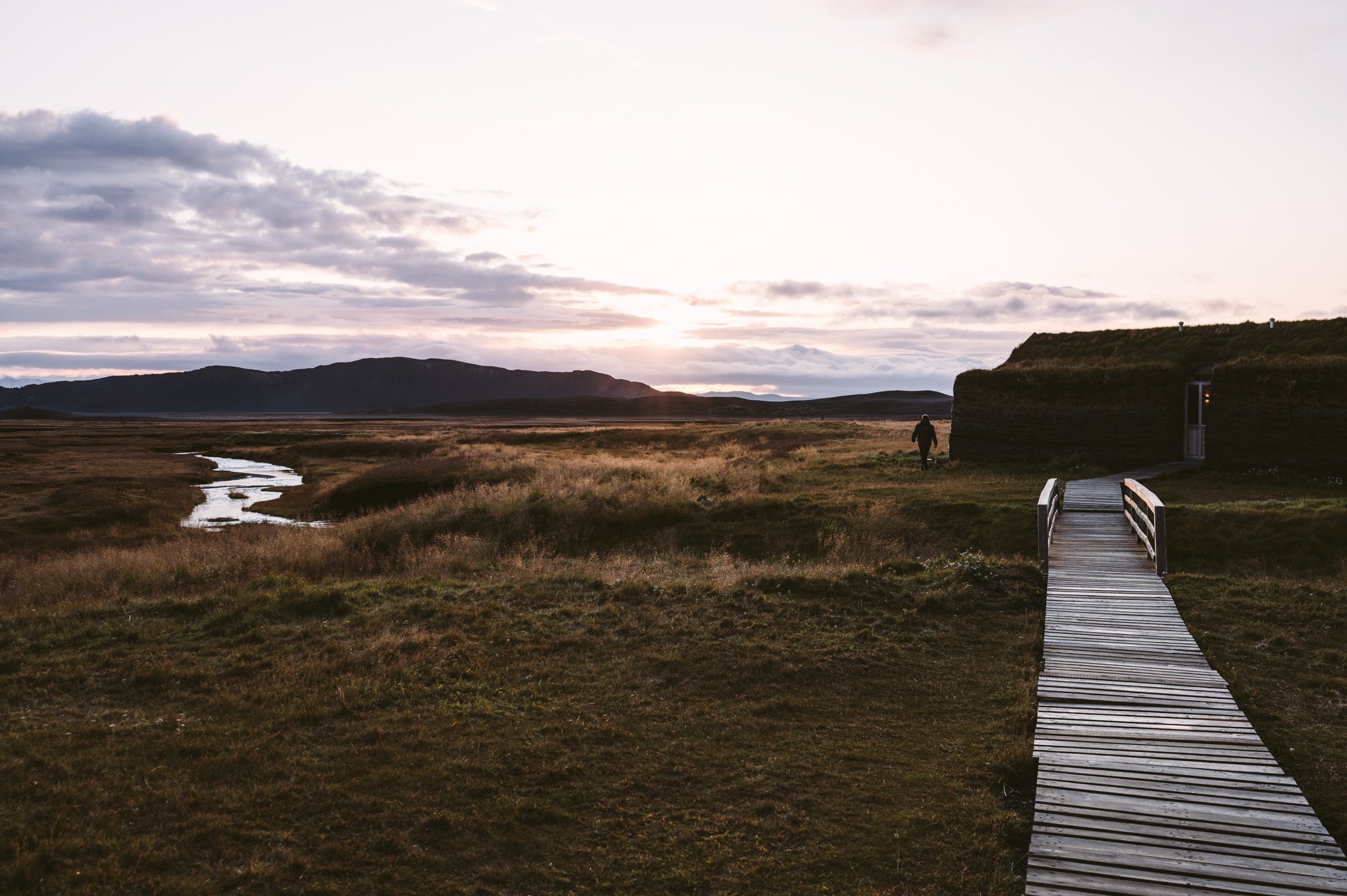 Location is key: The “backyard” of Fjalladyrd Guesthouse couldn’t be more scenic.
Location is key: The “backyard” of Fjalladyrd Guesthouse couldn’t be more scenic.
We preferred heated rooms with proper insulation and hot springs to warm up in. But this is of course a personal decision! If you want to go camping make sure to ask for permission if staying on private property or stick to the official camping grounds. If you also prefer proper rooms, then you can find all of the places we stayed at in this blogpost.
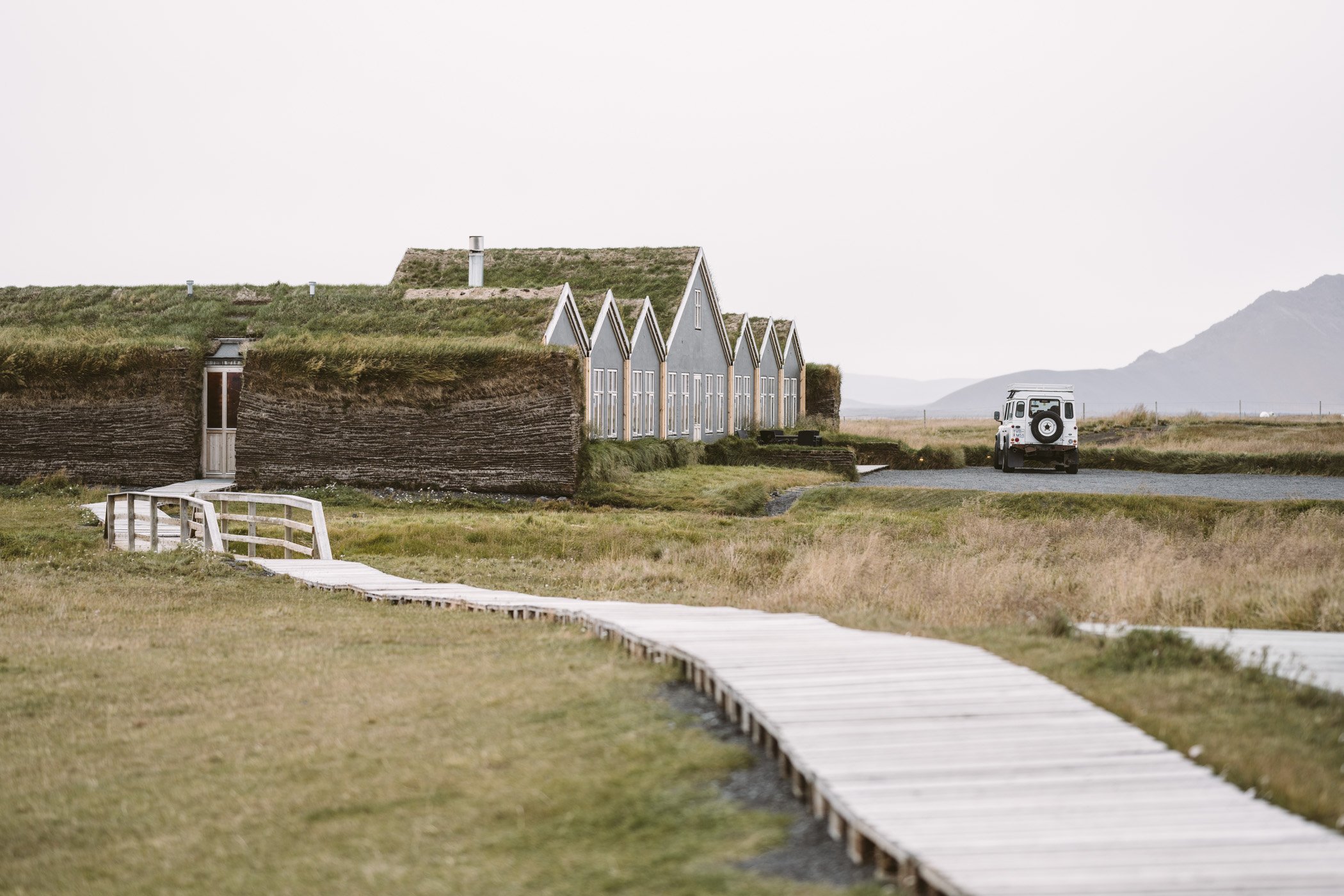 Fjalladyrd offers a brandnew grass covered guesthouse with beautiful rooms!
Fjalladyrd offers a brandnew grass covered guesthouse with beautiful rooms!
4. Where & what to eat (as a vegetarian)
Truth be told, we didn’t prepare ourselves enough for eating vegetarian in Iceland. At the beginning of our trip we stocked up on groceries in the supermarket in Reykjavík and just stored everything in our car. It’s cold enough in September for produce to stay fresh without the need for a freezer in the car. We recommend you to pile up on your favourite snacks at the beginning of the trip – as you most likely won’t be able to find restaurants every day!
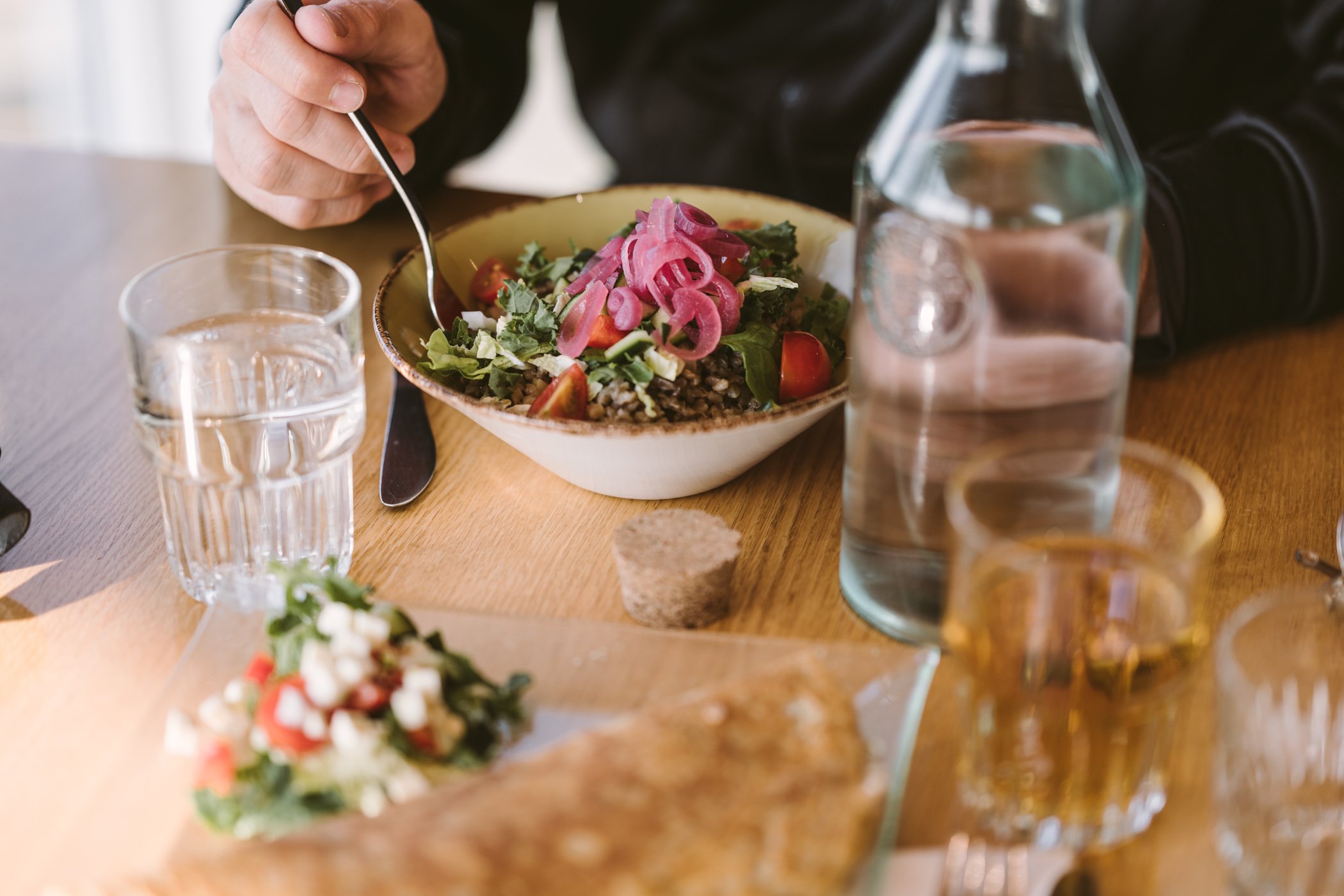 Vegetarian food is available, even though it needs a bit of planning (and is not cheap).
Vegetarian food is available, even though it needs a bit of planning (and is not cheap).
Chips and bread became our main staple throughout many of the days in Iceland (especially when we traveled away from the ring road). Mostly because we had no option to cook (we didn’t travel in a camper van and hence had no camping equipment). So, yes – there will be days where you won’t get gourmet food if you don’t prepare for it 😉
Here are some places where we ate & enjoyed vegetarian food in Iceland:
- Really good veggie burgers at Efstidalur (close to the Golden Circle)
- One of the best soups we had during dinner at Hrauneyjar Highland Center (dinner was included in our room rate and was among our favourites)
- Mediocre, but filling pizza at Dalakofinn Útibú
- Super creative & plenty vegetarian items such as Tacos at Gamli Baukur (in Húsavík)
- Some good staples at Vogafjós Farm Resort
- Homemade 3 course vegetarian dinner at Laugarfell (in the most scenic location, with no other restaurants around)
- Our favourite veggie lunch buffet at Vallanes Organic Farm
- Veggie soups & okay pizza with a view of the harbour at Hotel Framtid in Djúpivogur
- Incredibly tasty takeaway veggie hot dogs at the “Nailed It Fish and Chips” food truck at
Jökulsárlón glacier lagoon - Creative veggie dinner options at Hotel Skaftafell (Skaftafelli 2 Freysnesi, 785 Öræfi, Island)
- Fresh takeaway grilled veggie sandwiches Cafe Vatnajökull
- Super fancy (and expensive) vegetarian lunch at luxury hotel Skalalot
- Hip veggie burgers at Hamborgarabúlla Tómasar in Reykjavík
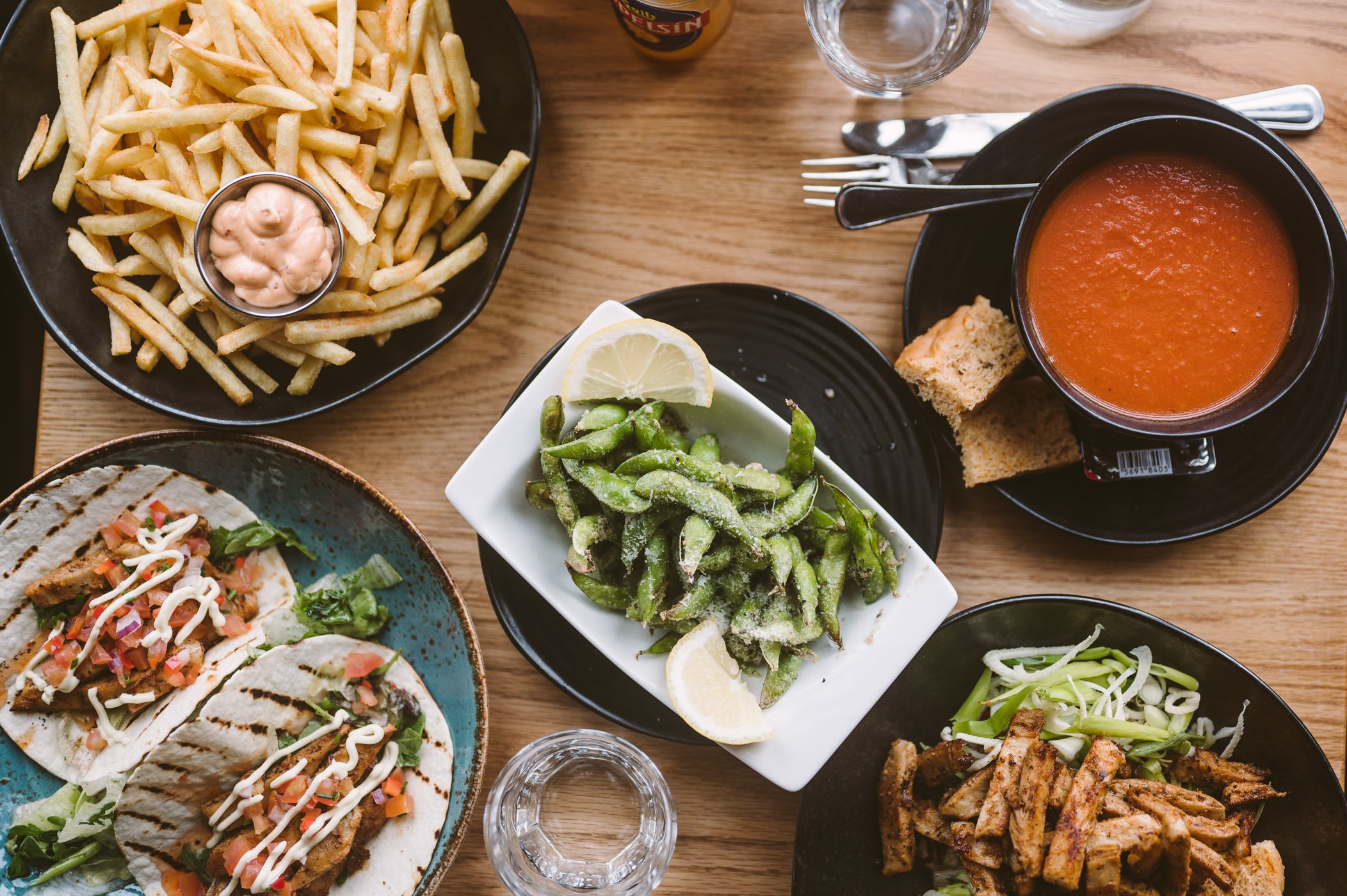 One of our favourites: Gamli Baukur restaurant in Húsavík
One of our favourites: Gamli Baukur restaurant in Húsavík
5. What kind of car to rent & what to know about the streets
We rented our Landrover Defender from Hertz Iceland and Katla Travel made sure that we had the full insurance coverage! It’s important to be careful to book insurance, that also covers the F roads in the highlands. The F roads are those unpaved gravel roads, that cross the highlands and are not open to all rental cars. If you don’t book extra coverage for those roads, you won’t have permission to drive on them.
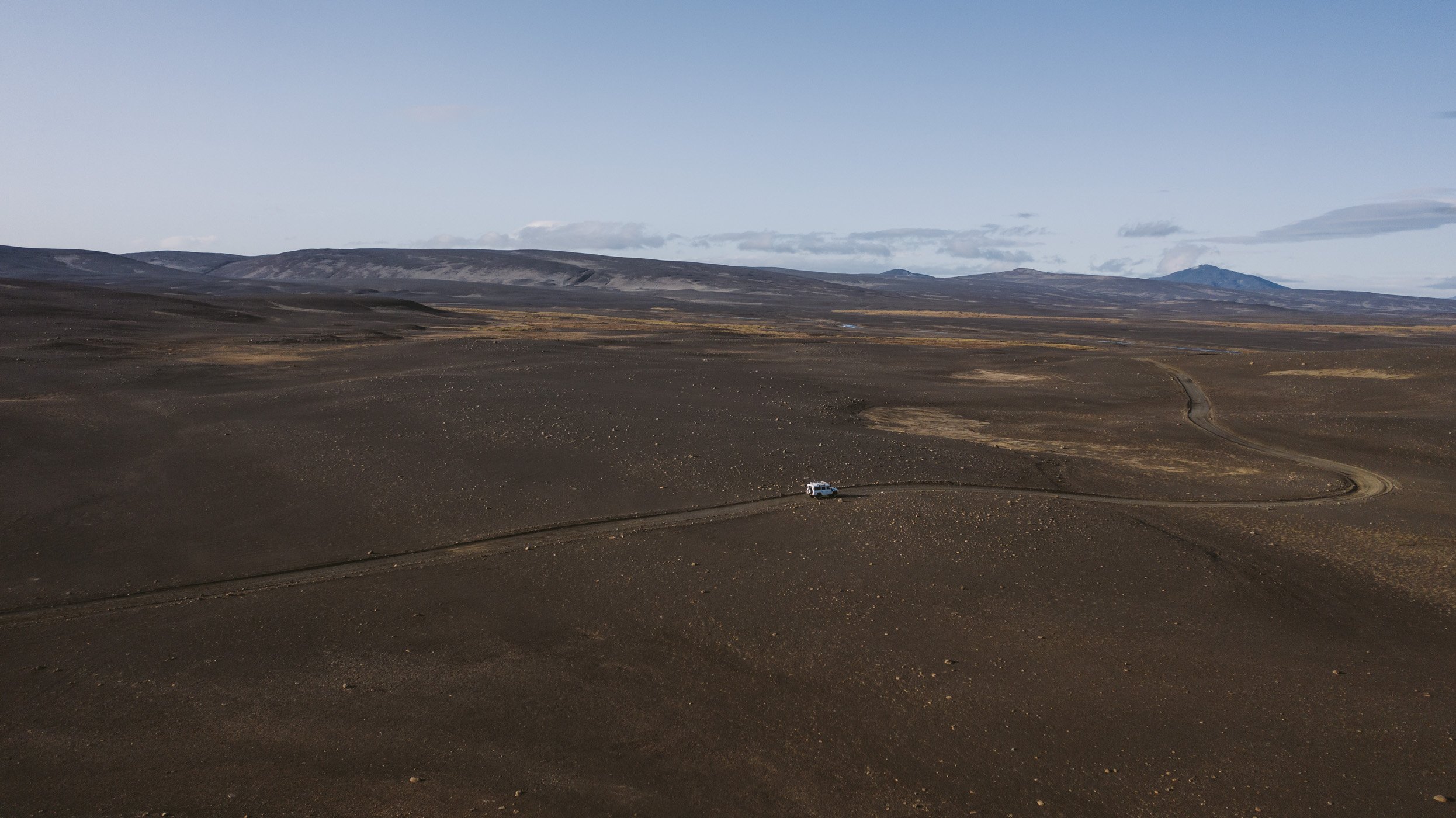 This is one of the F roads (to Askja) – it’s all gravel and huge potholes.
This is one of the F roads (to Askja) – it’s all gravel and huge potholes.
Our car was a reliable partner during those 14 days, although we had some really inconvenient meet-ups with huge pot holes and bent our steering wheel a bit during one especially intense hit. Hertz has outlets all over Iceland – so we went to a mechanic in Egilsstadir just to check the steering wheel and get a (free) check-up. After a green light from the mechanic we continued our road trip 🙂
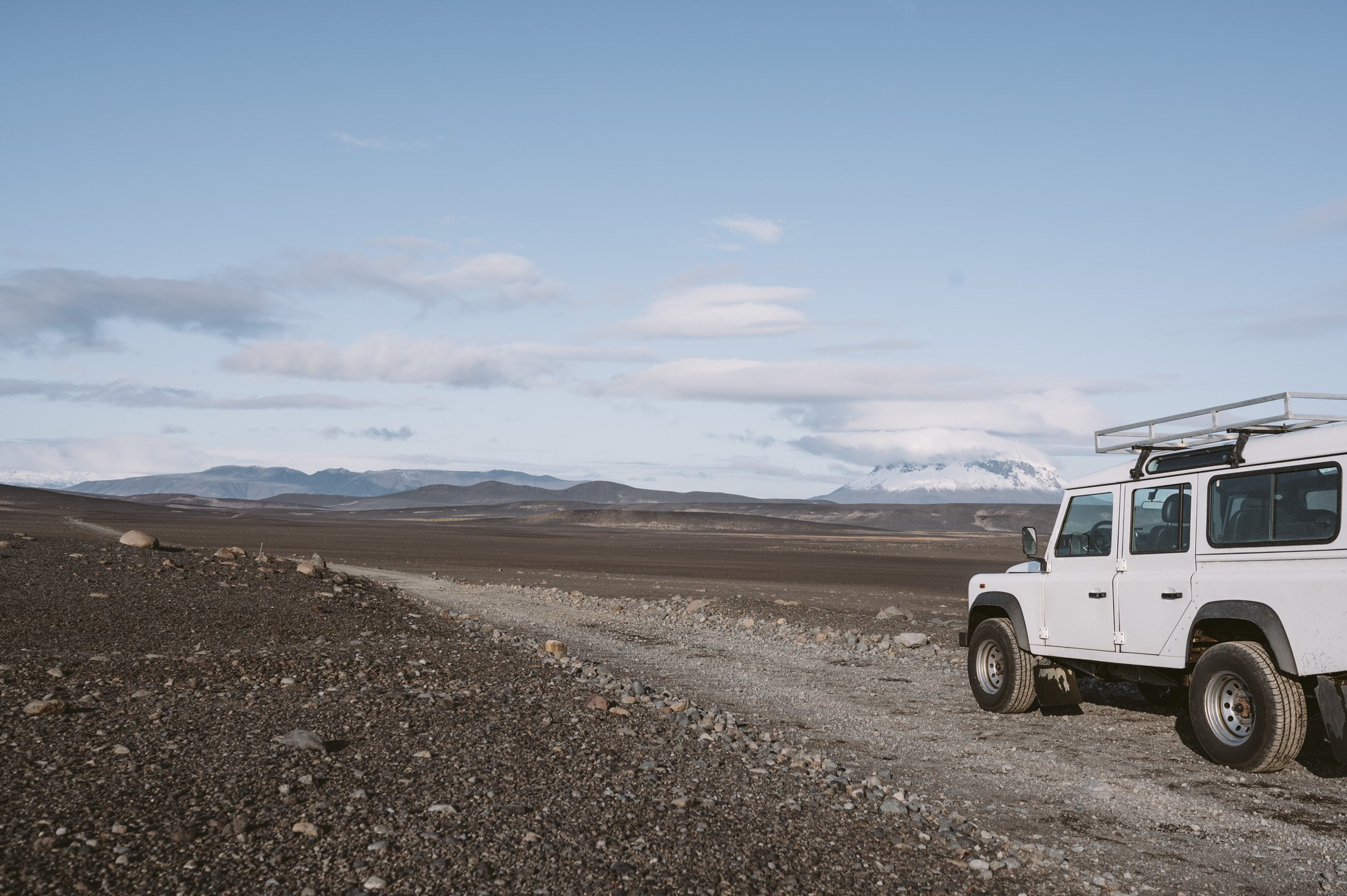 We were alone on this road most of the day – so if you get stuck here, you’ll have to wait a long time to get help.
We were alone on this road most of the day – so if you get stuck here, you’ll have to wait a long time to get help.
When we went to Askja we saw a car getting towed in the middle of nowhere on one of those rough F roads. It was a proper SUV (from a Japanese brand – not naming any names here 🙂 ), but obviously not a Defender – hint hint 😉 We truly believe that Defenders are ideal for Iceland – at least if you plan on driving in the highlands for more than 10 kilometres. Their motors are properly sealed so you can pass through rivers and there isn’t a lot of high tech electric stuff happening in the car.
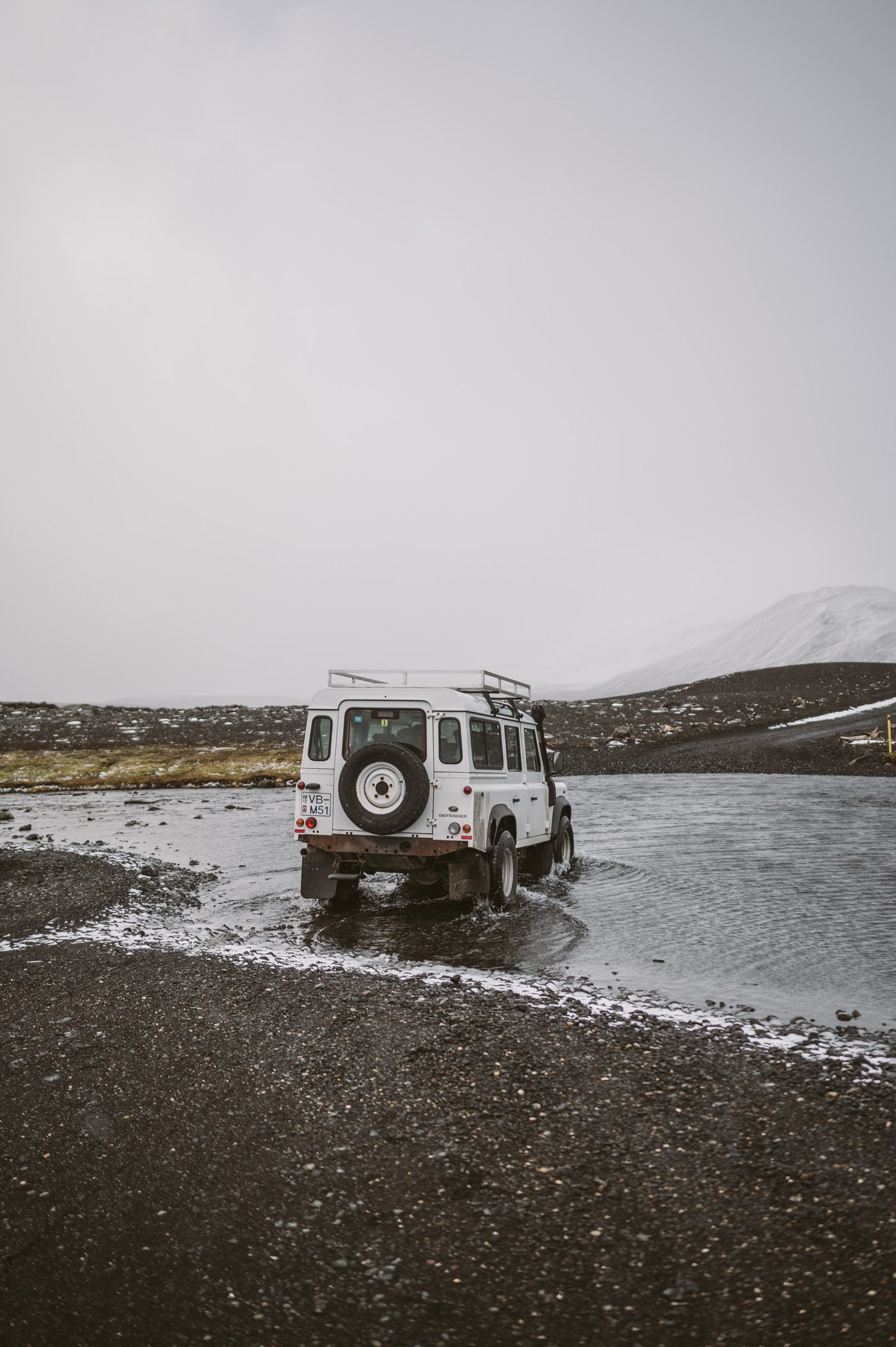 River crossings are easily done in this car!
River crossings are easily done in this car!
Of course you’ll have to live with a bit less comfort – meaning the seats don’t really recline, the car isn’t properly insulated making it quite noisy and rough and there are no USB outlets (which also means no music outside of range of radio stations – so practically everywhere in the highlands).
 Inside the car isn’t super comfortable – no USB plugs for the radio, no reclining seat, etc.
Inside the car isn’t super comfortable – no USB plugs for the radio, no reclining seat, etc.
But that’s the price you pay for being safe on these rough roads.
One last tip:
Always check road conditions on road.is where Iceland offers super accurate daily updates on road conditions & closures. When we drove the F26 road it snowed and was promptly closed the next day – so we got lucky to still pass on that last day of then season.
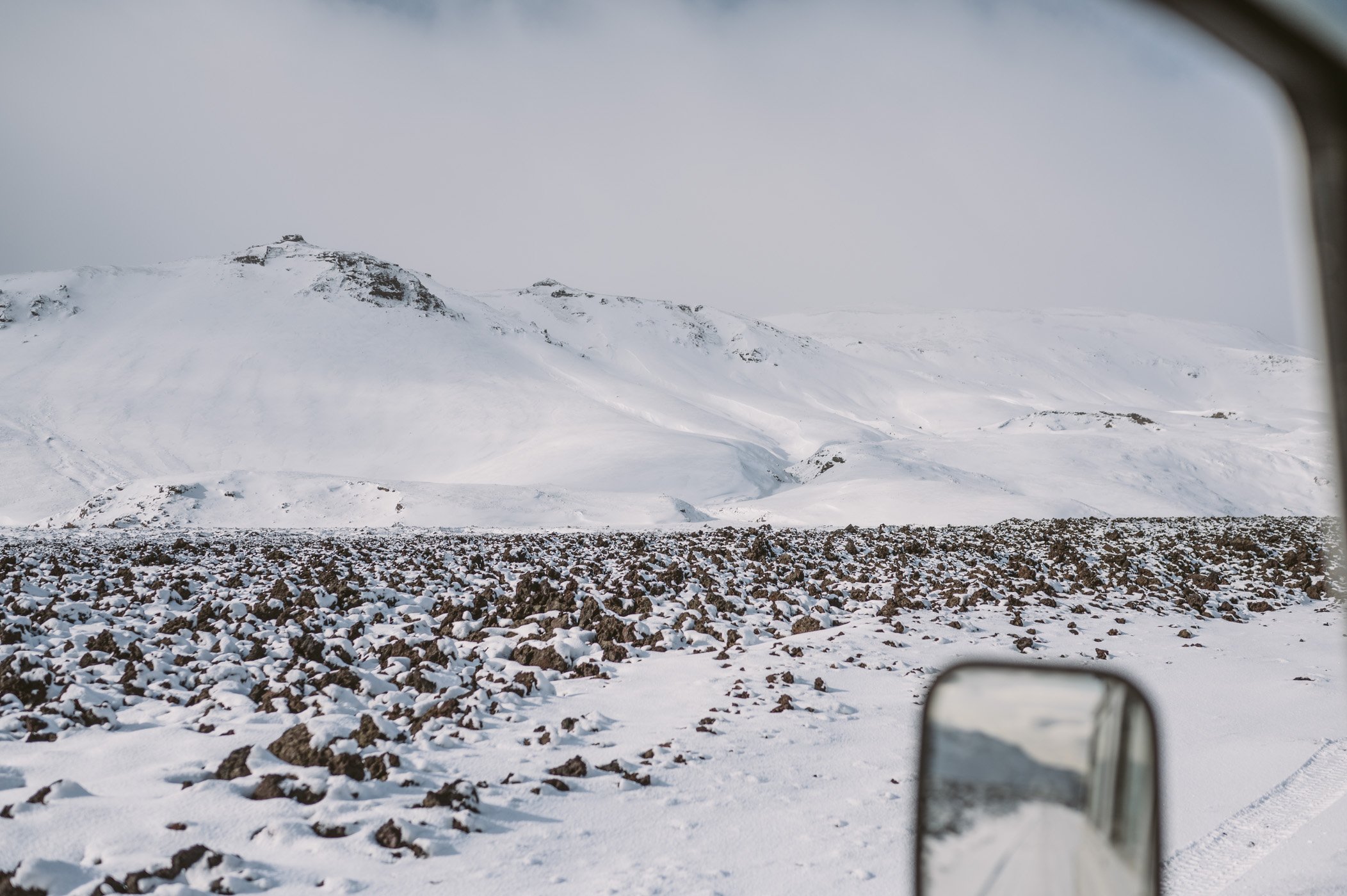 We were one of the last to drive on this road for the season.
We were one of the last to drive on this road for the season.
6. Where to pee
This was one of the questions we received on Instagram a lot! Where can you find toilets in Iceland? Well truth be told, we had the occasional peeing in the wild moment in the highlands 😉 Of course you’ll find public toilets alongside the ring road and at every major attraction (there are toilets at most of the parking lots of the waterfalls, geysers, etc.), but once you leave these regions things get more tricky 😉 But you’ll also find public toilets where you wouldn’t expect them – for example in the visitor center of a power plant near Krafla (thanks for saving us!) 🙂
 Don’t pee here! 😉
Don’t pee here! 😉
Our tip:
Always bring toilet paper and a waste bag in your car if nature calls. Please don’t leave anything behind in the fragile nature (including your toilet paper and you know what 😉 ). It’s also not ideal to trample over moss, as this takes decades to recover – so try and stick to any trails if possible. Also try and respect private property and not do your business in somebodies backyard 🙂
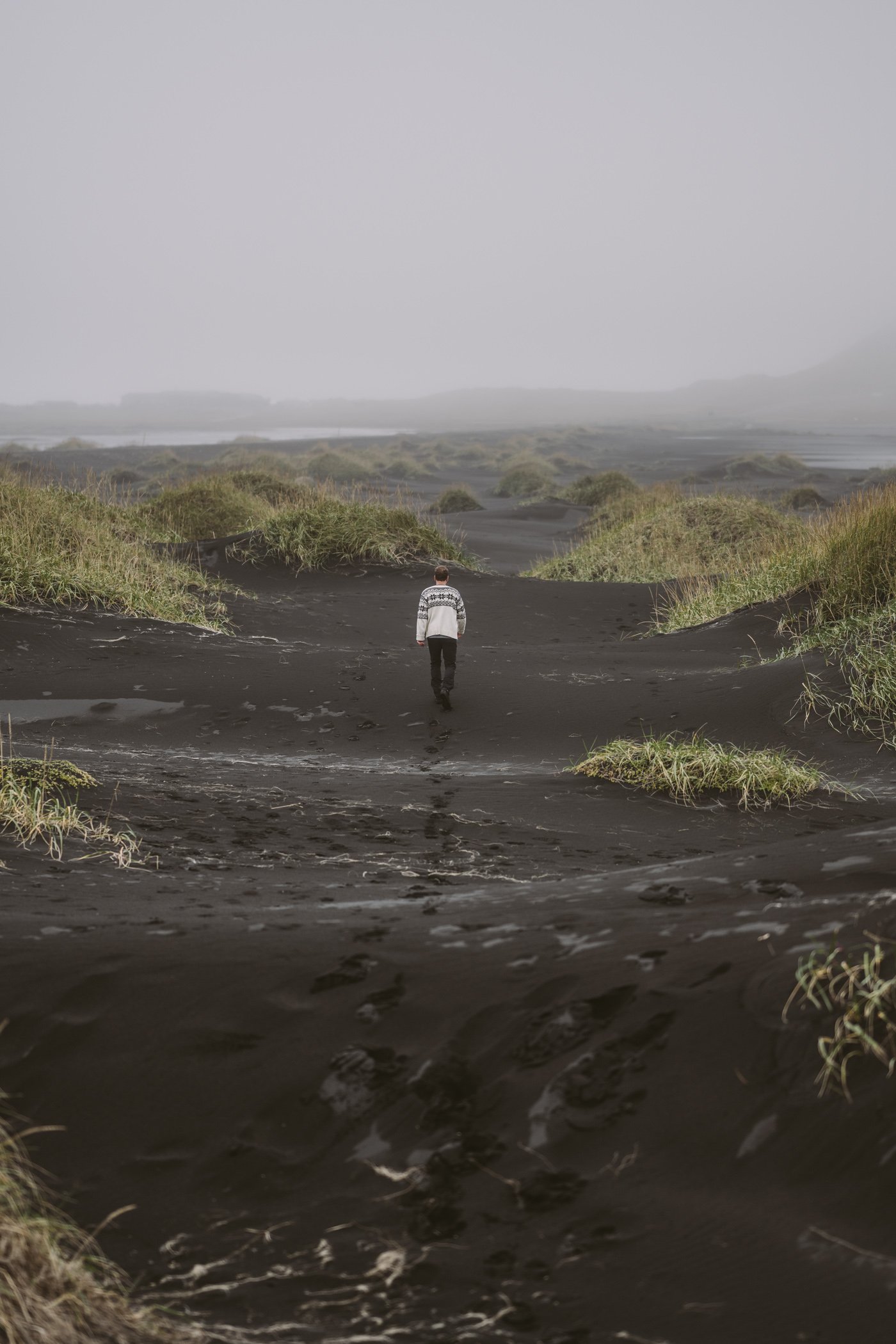 Avoid trampling on moss when nature calls!
Avoid trampling on moss when nature calls!
7. What to pack for Iceland
Layers, layers, layers. Temperatures can vary extremely during one day – wind and rain make everything feel much colder. But when the sun does come out it gets quite warm! Also make sure your outer shells are really waterproof. Also your pants! You can leave your umbrella at home though – the winds will make it impossible to use it in Iceland.
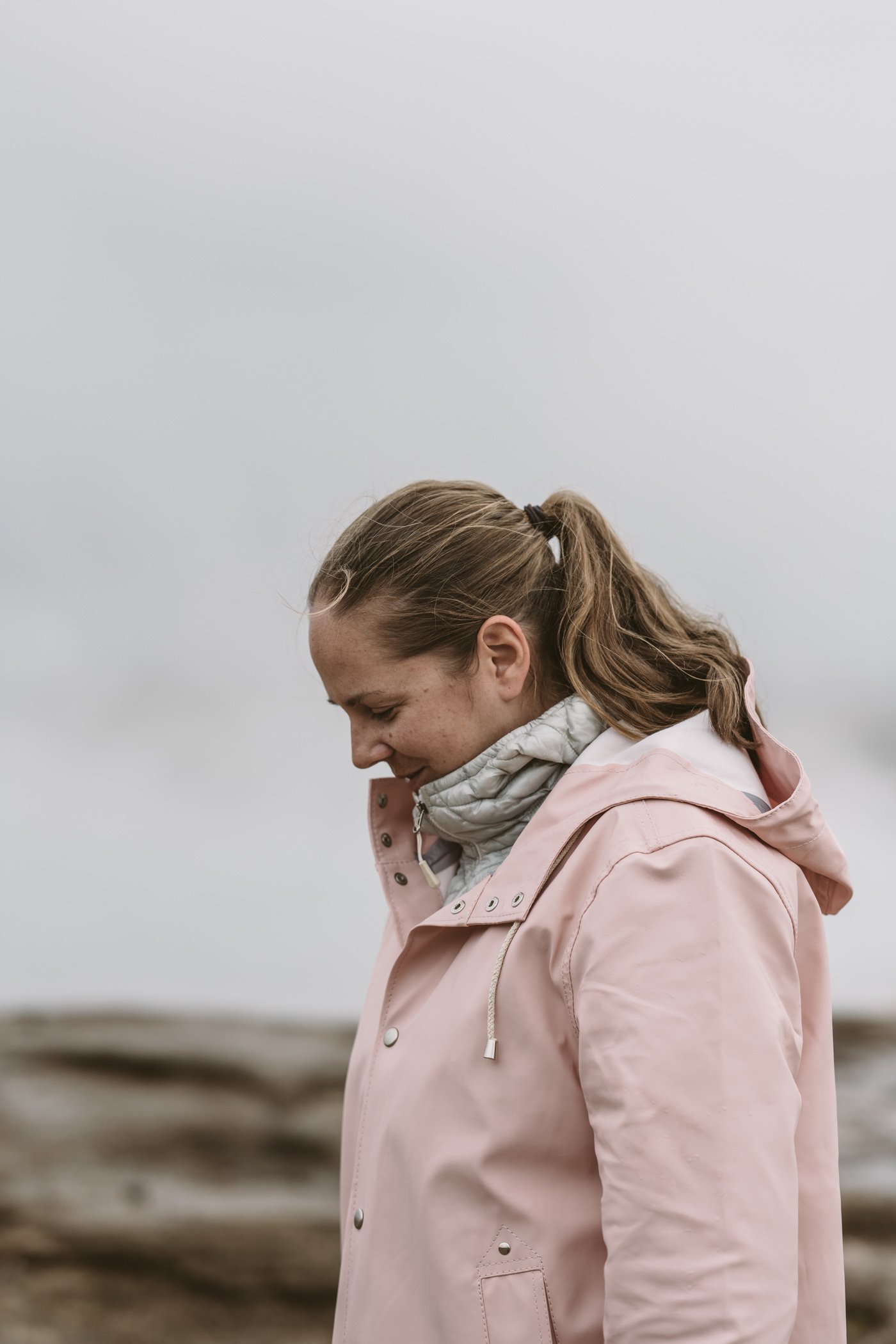 I wore a fleece jacket, a light down jacket and a rain coat most of the days.
I wore a fleece jacket, a light down jacket and a rain coat most of the days.
Bring at least 2 bathing suits / trunks with you and we recommend to also pack one fast drying travel towel per person. Many of the hot springs come without any facilities, so you’ll need to bring your own towels. We always had a separate bag in the car with our swimming stuff. As it was mostly cold and wet nothing dried really easily, therefore it’s good to have more than one swim suit 😉
Pro tip:
Always take your bathing clothes with you into the guesthouses / hotels to dry and warm up 😉
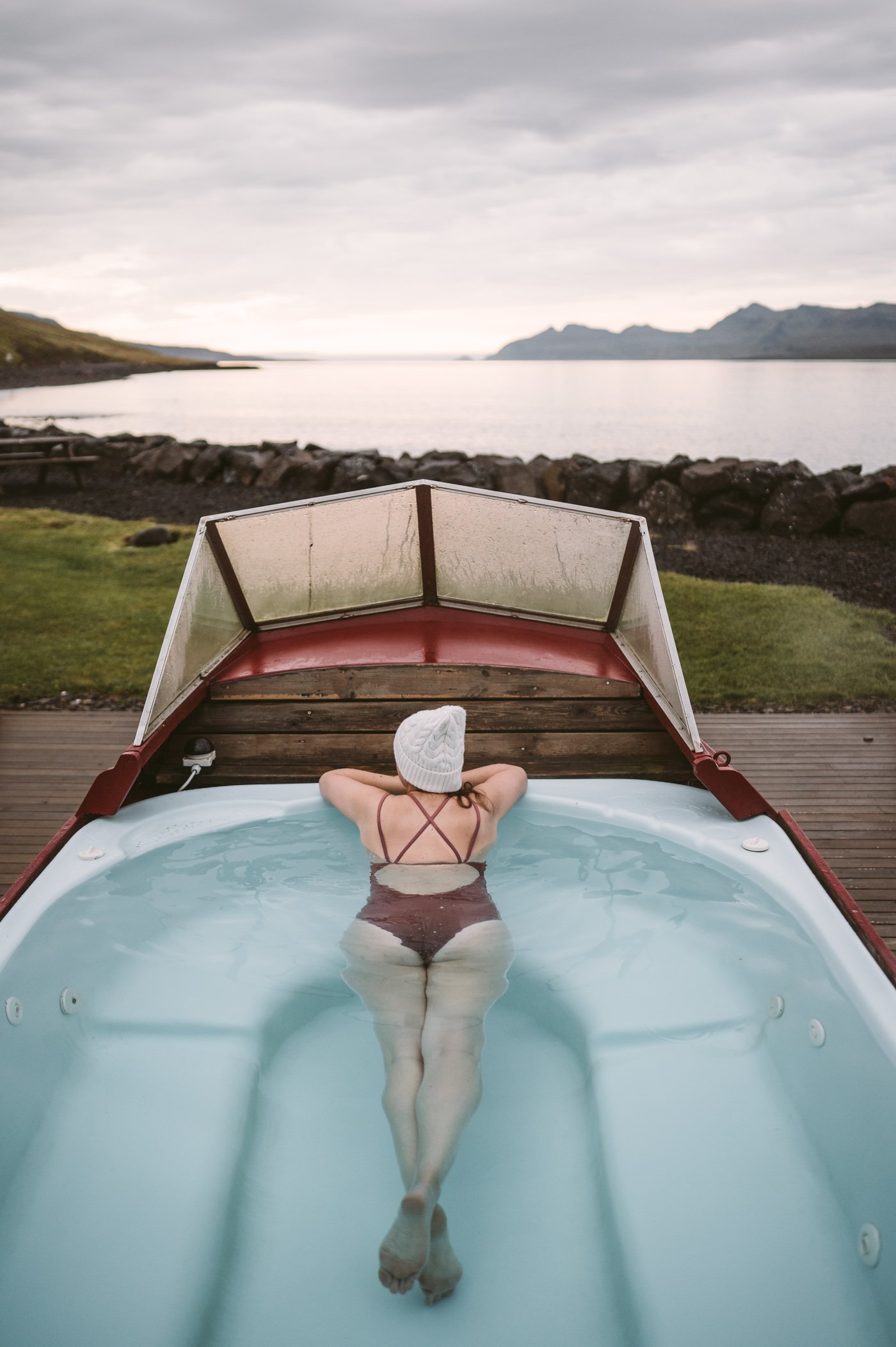 Pack 2 bathing suits / trunks, as they might not dry up quick enough.
Pack 2 bathing suits / trunks, as they might not dry up quick enough.
Definitely bring a reusable water bottle – the tap water quality is the best we ever experienced anywhere around the world. You’ll never need to buy water in Iceland.
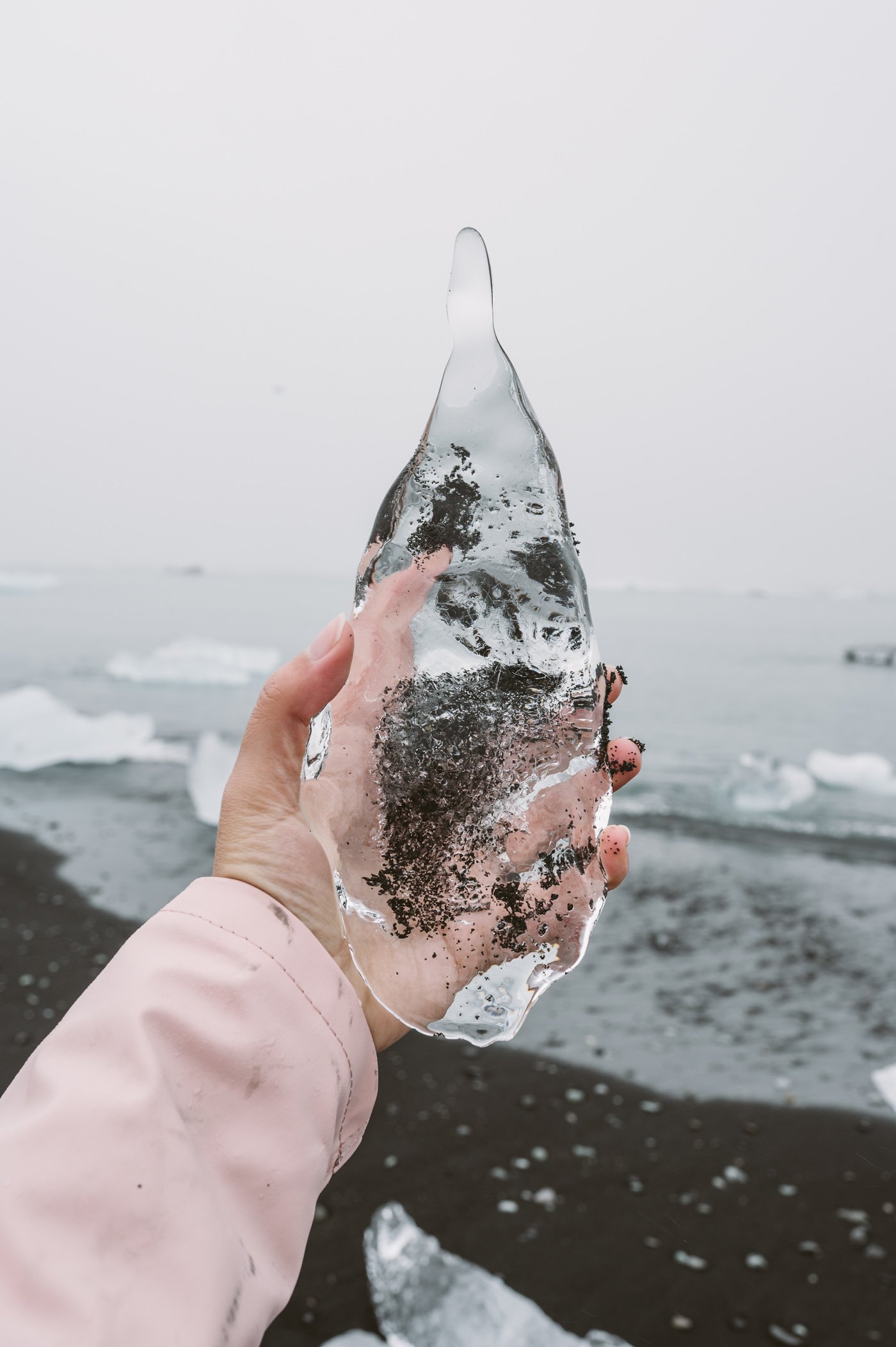 Symbol photo of how amazing the water is in Iceland!
Symbol photo of how amazing the water is in Iceland!
Addendum: The over tourism debate & how to protect the nature
We don’t want to leave this blogpost without writing a few words about the ongoing over tourism debate in Iceland. During our roundtrip we experienced immensely contradictory moments. From trying to get one photo of a waterfall without a dozen of tourists in the frame (Skogafoss) to not meeting a single soul during a trip of 10 hours in the highlands.
So yes, over tourism is most definitely an issue in Iceland and we strongly recommend to avoid short 3-day-trips which lead to this exact problem. These trips all concentrate on the same few “attractions” around the Golden Circle and the Southern coast of Iceland. Please do yourself and Iceland a favour and spend more time here to get away from these regions and venture out further.
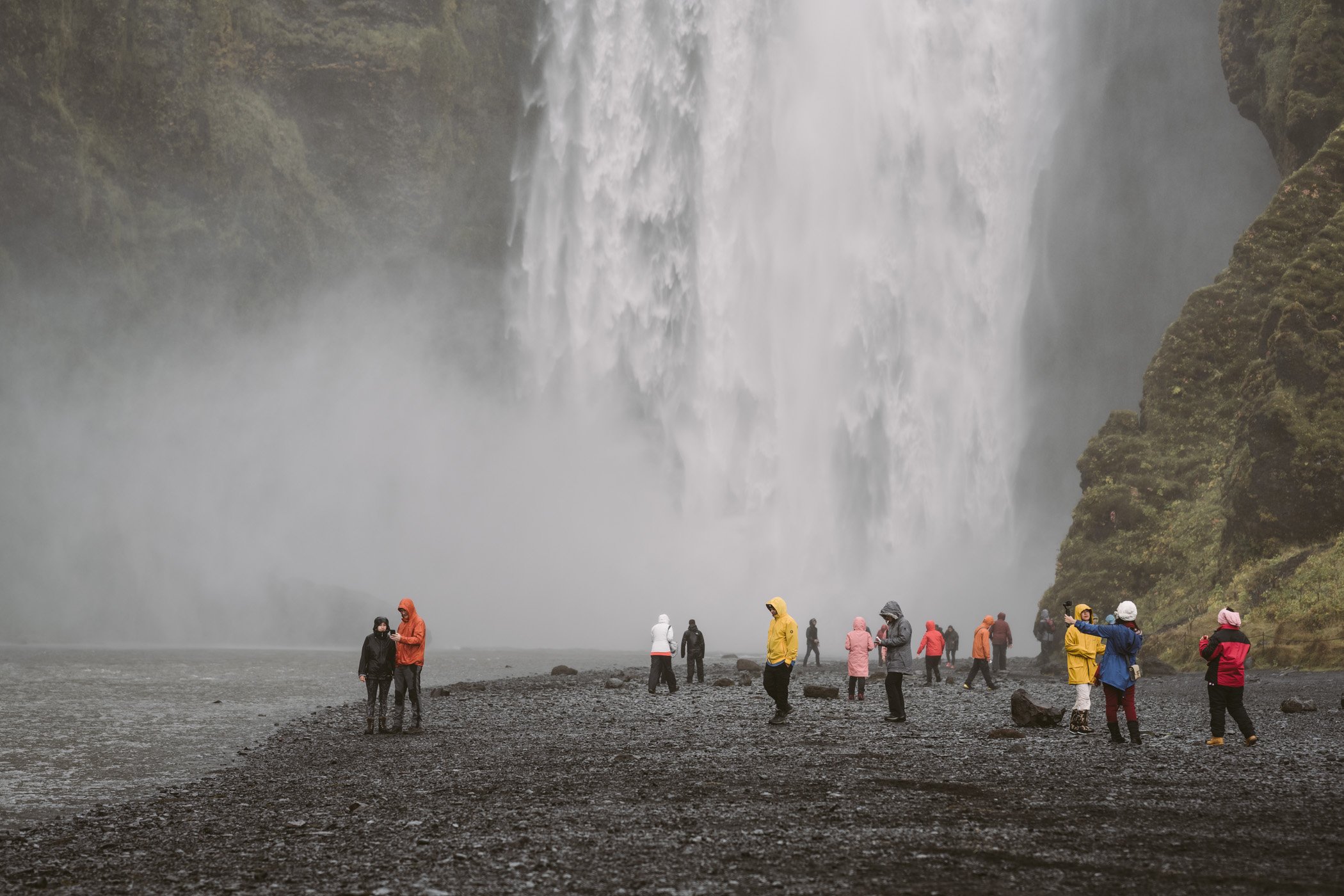 Of course everyone wants to see Skogafoss – so that’s what a usual day looks like there.
Of course everyone wants to see Skogafoss – so that’s what a usual day looks like there.
Not pictured: The huge car park right in front of the waterfall with about 300 cars and busses.
We experienced the most magnificent landscapes in remote parts of Iceland all by ourselves. But unfortunately we also saw tourists climbing over moss-covered stones to sit at the edge of waterfalls – ignoring all warning signs. I know it’s hard to resist those Instagram motifs that have been repeated many thousand times. But this behaviour seriously destroys the fragile ecosystem in Iceland.
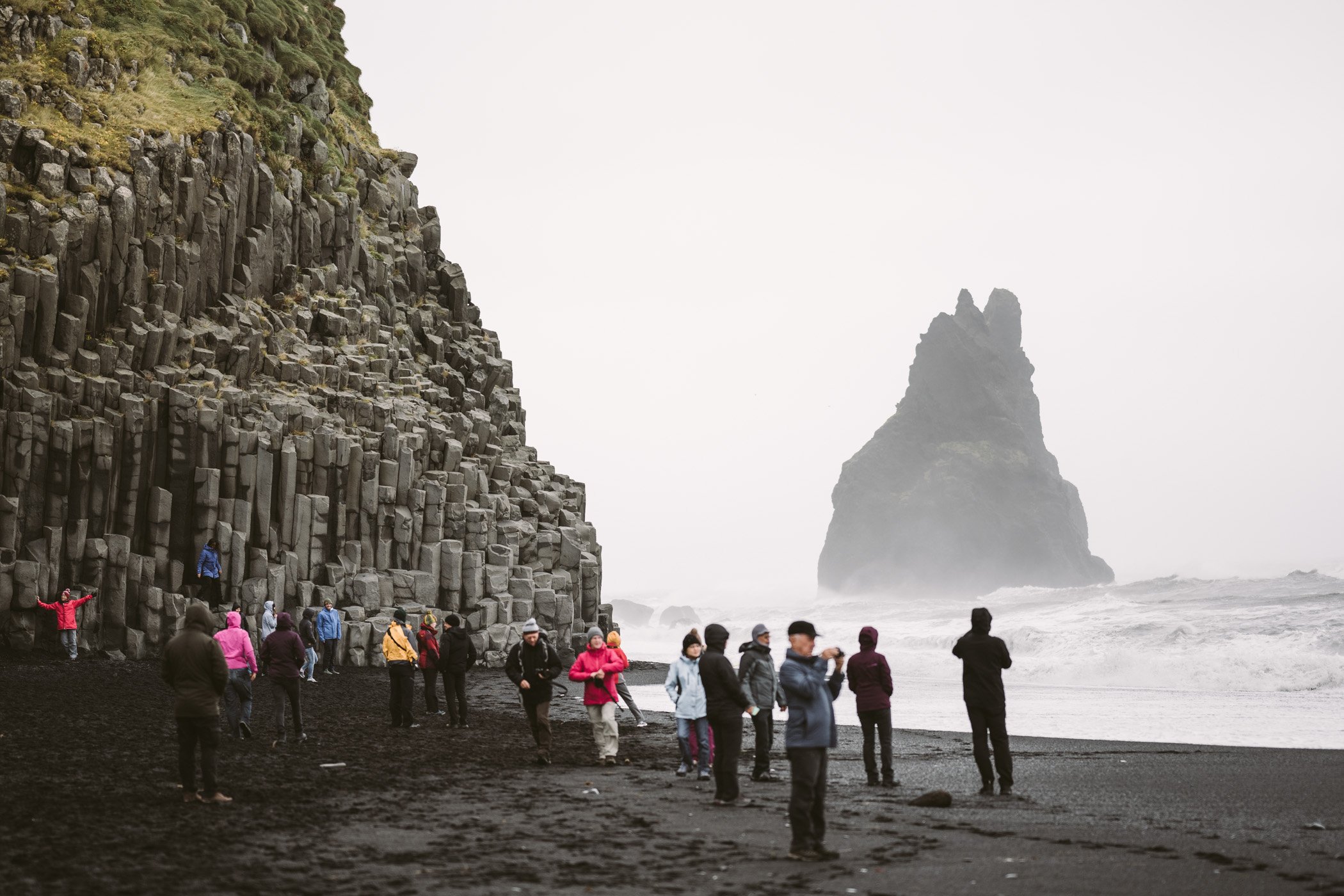 The black beach at Reynisfjara was my personal low light of the trip – no way to enjoy this place.
The black beach at Reynisfjara was my personal low light of the trip – no way to enjoy this place.
The bottom line is to be respectful and obey the rules. Don’t go wild camping on anyone’s property, don’t leave your trash behind, don’t venture off the carefully created pathways at a waterfall or a canyon – simply be aware of your impact as one of over 2 millions of tourists that flood Iceland every year.
In the end we all want to experience Iceland the way we all dream of it – wild, remote and pristine. And this beauty is still to be found and needs to be sustained for future generations!
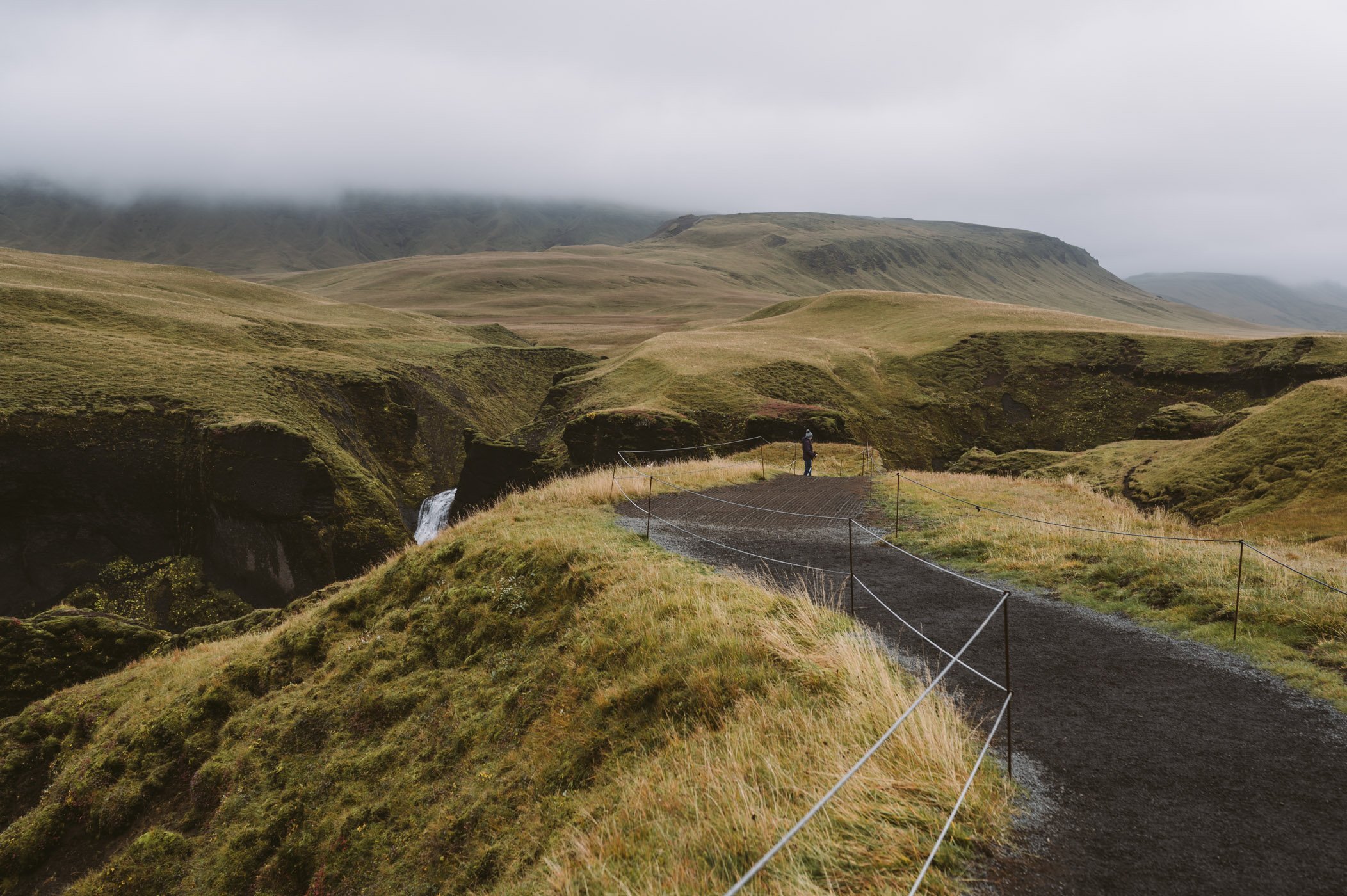 Fjaðrárgljúfur Canyon had to close down for months because of the damage done by tourists.
Fjaðrárgljúfur Canyon had to close down for months because of the damage done by tourists.
Now there’s new pathways and signs (yet we saw people climbing over the fences to get “the shot”).
The best way to avoid the disappointment of running into large crowds of tourists is to spend as little time as possible at the Golden Circle and the South coast. Instead we recommend to focus on the highlands, Eastern and/or Western Fjords and stay away from the ring road as much as possible! This way you’ll get the remote & wild Iceland experience you’re dreaming of.
Travel Video: ICELAND – Episode 1
Find the full 14 day road trip itinerary here.
Spread the love if you found the tips in this post helpful:

